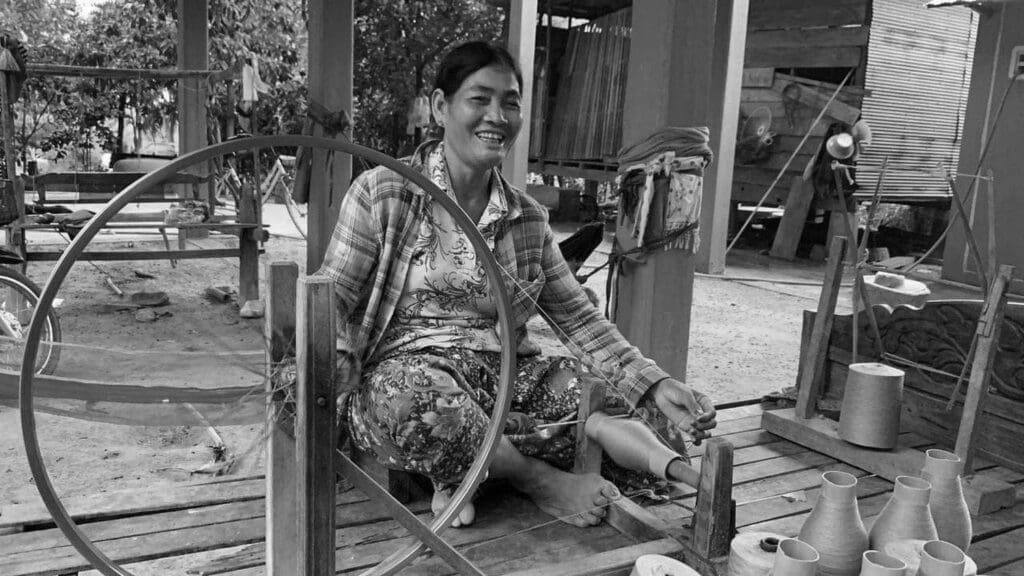Krama has been associated with the Cambodian people for many centuries. According to belief, the people here follow the Buddhist religion and worship three gods: the god of creation (Brahma), the god of preservation (Vishnu) and the god of destruction (Shiva). Among them, the god Vishnu is a gentle and kind god, protector of the people and often rides a 7-headed snake called Naga. The Cambodian people, out of respect for Vishnu, created the Krama scarf (which translates as 'snake scarf') symbolising the snake god Naga. They believe that wearing or wrapping a scarf on their head allows them to have the god Vishnu and the snake god Naga by their side, bringing luck and peace to the wearer.

Traditionally red or blue with small checks, the krama also has extremely diverse uses. The Cambodians themselves say that the krama can have up to 90 different uses. Born to protect themselves from the intense Cambodian sun (the cotton fibres absorb perspiration perfectly), the local population also combine their krama scarves to make dresses, sarongs, aprons, etc. Mothers also use krama to make hammocks, wrap newborn babies or make shopping bags. So krama continues to be present in people's daily lives and activities.
Traditional kramas made of small white and red or white and blue checks now come in a variety of colors, as seen in the Colored Krama cotton scarf collection and the Krama Design collection.
Worn by men, women and children of all ages and professions, their everyday usefulness gives them a symbolic value. They can be used in many ways: stole, scarf, scarf but also hammock, headgear for sun protection, bathing suit, belt, etc.
Robust, the krama can even be transformed into a spare bicycle seat for your baby when attached between the handlebars! But of course, the Khmers first saw in this scarf a way to perpetuate their heritage by confirming that it belongs to their country.